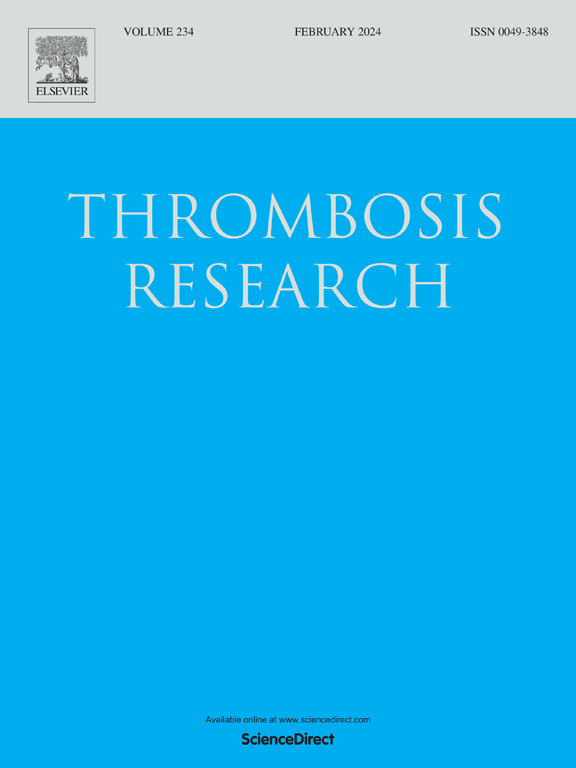Development of a clinically relevant rat model of chronic thromboembolic pulmonary hypertension by combining splenectomy with pulmonary thromboembolism
IF 3.7
3区 医学
Q1 HEMATOLOGY
引用次数: 0
Abstract
Background
Chronic thromboembolic pulmonary hypertension (CTEPH) is a severe condition resulting from unresolved thrombi in the pulmonary arteries, leading to increased pulmonary vascular resistance and right heart failure. Currently, the scarcity of clinically relevant animal models of CTEPH significantly hampers mechanistic studies and drug development.
Methods
This study aimed to establish a rat model of CTEPH by combining splenectomy with thrombus injection, simulating key clinical risk factors associated with the disease. Rats underwent splenectomy and subsequent intravenous administration of thrombi, followed by hemodynamic and histological measurements as well as lung tissue RNA sequencing.
Results
Splenectomized rats exhibited significant increases in platelets and delayed thrombolysis. Five weeks after splenectomy and thrombus injection, the rats exhibited thrombus retention in large pulmonary arteries, increased right ventricular systolic pressure, and pulmonary vascular remodeling, which were characteristic of CTEPH. Transcriptomic analysis revealed increased expression of inflammatory cytokines Ccl2 and Ccl3, as well as the B cell marker Cd79a, which was confirmed as an increase in CD79A+ B cells in the lung tissue.
Conclusions
Overall, this novel approach of combining splenectomy with thrombus injection provides a clinically relevant model for studying CTEPH pathophysiology and evaluating potential therapeutic interventions.
求助全文
约1分钟内获得全文
求助全文
来源期刊

Thrombosis research
医学-外周血管病
CiteScore
14.60
自引率
4.00%
发文量
364
审稿时长
31 days
期刊介绍:
Thrombosis Research is an international journal dedicated to the swift dissemination of new information on thrombosis, hemostasis, and vascular biology, aimed at advancing both science and clinical care. The journal publishes peer-reviewed original research, reviews, editorials, opinions, and critiques, covering both basic and clinical studies. Priority is given to research that promises novel approaches in the diagnosis, therapy, prognosis, and prevention of thrombotic and hemorrhagic diseases.
 求助内容:
求助内容: 应助结果提醒方式:
应助结果提醒方式:


